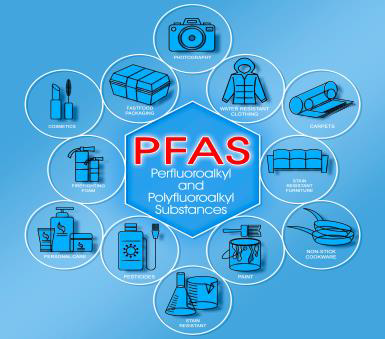The Problem:
Per- and polyfluoroalkyl substances (PFAS) are a group of synthetic chemicals that have been widely used in various industrial and consumer products such as non-stick cookware, water-repellent fabrics, and firefighting foams due to their unique properties of resistance to heat, water, and oil. These chemicals are highly persistent in the environment and have been found to accumulate in sources of drinking water. PFAS have been shown to lead to health issues like a weakened immune system, damage to the liver, and an increased risk for various types of cancer. The current methods for removing PFAS from water are inefficient and typically involve breaking larger PFAS molecules into smaller, yet still harmful, components that are often more challenging to manage and remove.
The Solution:
Researchers at the University of Alabama have developed a method of removing and breaking down perfluorooctanoic acid (PFAS) using catalytic ozonolysis breaking down the PFAS into easily removable, nontoxic byproducts. The technology offers a scalable solution for widespread application in municipal systems, addressing a critical public health issue related to PFAS contamination in water supplies.


Benefits:
· Complete removal of PFOA from drinking water
· Reduction of harmful of health risks from drinking water
· Use of ozonolysis for effective PFOA decomposition
· Production of easily removed byproducts
Patent Pending